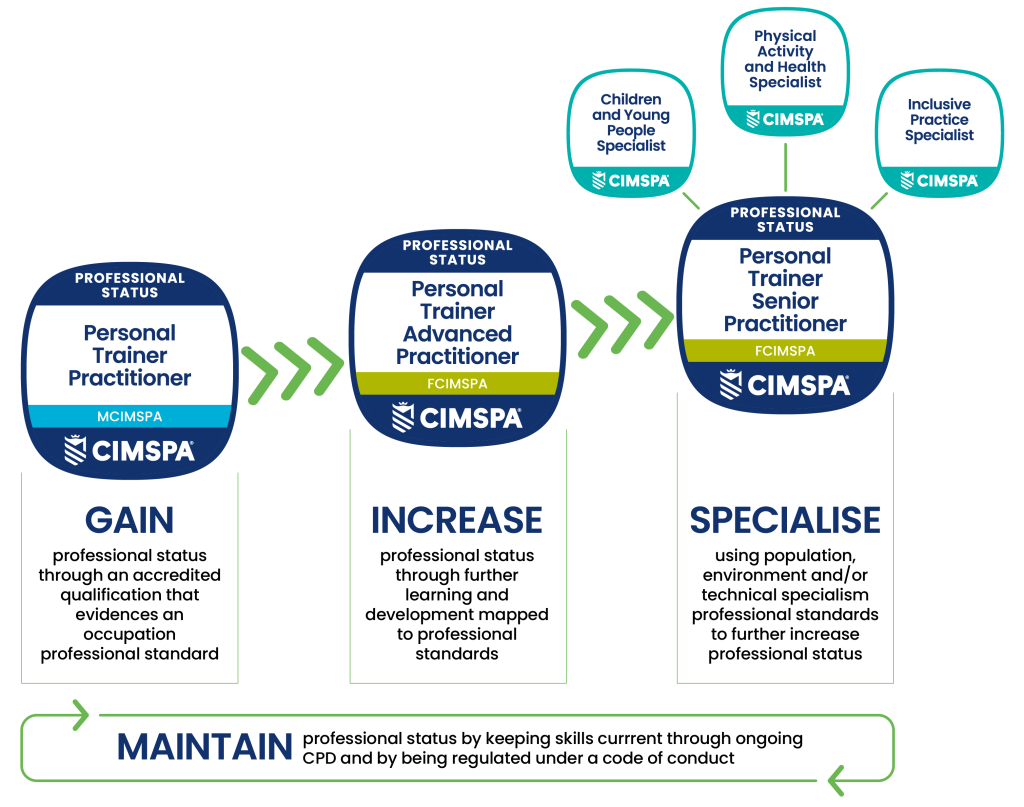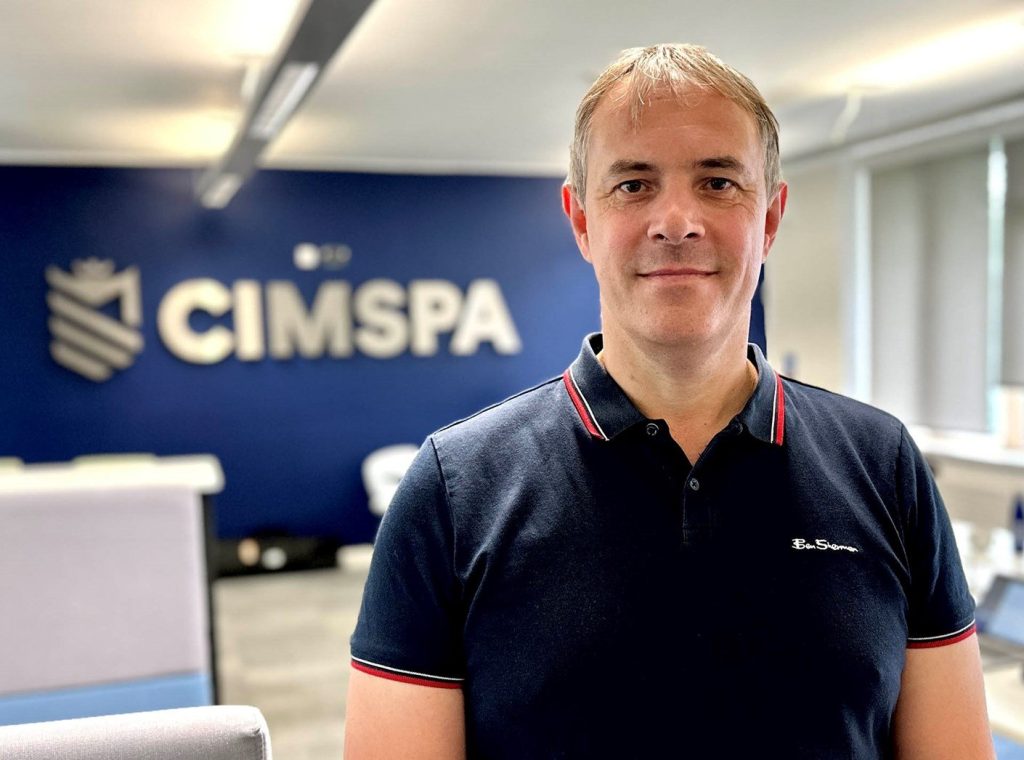Professional recognition underpins CIMSPA’s strategy, Releasing the Power of our Profession. This summer will see the launch of professional status, which will enable sport and physical activity professionals to be recognised based on the status that they are issued.
Here, Spencer Moore, Chief Strategy Officer of CIMSPA, takes a look at professional status and professional recognition and what they mean for the sector.
“With the labour market being so competitive, achieving professional status and the recognition that it leads to is increasingly vital across many industries. It not only validates someone’s professional expertise but also enhances their career prospects, reputation and contributions to their role and the sector that they work in.
In many industries, professional status and recognition hold particular significance because of the emphasis that they place on maintaining high standards of quality, accountability and public trust.
And this year, sport and physical activity will become one of those sectors.
What is professional status?
Professional status refers to the ‘standing’ that an individual achieves within a profession. It often signifies a person’s qualifications, experience and commitment to meeting and adhering to the professional and ethical standards of their occupation.
Professional status is issued by recognised professional bodies or associations based on a set of criteria. Industries such as engineering, accountancy, healthcare, aviation, teaching, law and many others have professional status which indicates that a professional has demonstrated competence against a set level of criteria and a commitment to continuous professional development. Ongoing skills and knowledge development then allows a professional to achieve higher levels of professional status if they wish to progress their career by gaining additional expertise and professional experiences.
An individual’s ‘level’ of professional status often indicates the type of work that they can carry out, the type of client, customer, patient or equipment that they can work with, and the environment in which they are able/allowed to work.
Criteria for gaining professional status will vary by profession, but in most cases, it is likely to include some of the following:
- Knowledge – qualifications and/or recognised training that demonstrate foundational knowledge required for the role and/or areas of specialism.
- Experience – evidence of the practical application and development of skills over time.
- Standards – adherence to recognised professional standards and codes of conduct that uphold the integrity and trustworthiness of the profession.
Achieving professional status can also open doors to advanced career opportunities, higher earning potential and leadership roles by being a benchmark for quality and competence.
How does this link to professional recognition?
Professional status is the means for professional recognition, i.e. for a professional to be acknowledged and respected in their role. An individual is issued a professional status. It is this status that allows their peers, customers and other stakeholders, including employers and deployers, to easily understand and recognise the skills, knowledge, abilities and behaviours that the individual has, the work that they can do, with whom they can work and where they can work.
When stakeholders see and understand the importance and meaning of different professional statuses, they can recognise the difference in service that they will receive between someone who has professional status and someone who does not, as well as between different statuses.
Why does this matter in our sector?
Firstly, it’s about building trust. Public confidence in professionals is paramount. Professional status and the recognition that it brings serve as markers of credibility, assuring clients, customers and other stakeholders that an individual possesses the requisite skills, knowledge and competencies to support them with the activity that they are doing and that they adhere to ethical behaviours.
It’s also about career advancement. Professionals with recognised status often enjoy greater mobility within their careers. Employers and customers value individuals who have demonstrated their expertise and commitment to excellence, choosing them over individuals without a professional status. It allows specialist expertise to be recognised, too. An individual that has undertaken professional development to enable them to provide services to clients/customers with particular needs may hold a different status to a professional that hasn’t.
It also enables those outside of our sector, whether that be those considering a career or colleagues in allied professions such as healthcare, to understand the skills, knowledge and behaviours an individual has based on their status. It helps to illustrate the scope of practice that an individual has, i.e. the knowledge, skills and experience that they can use to practise safely and effectively in the best interests of their client. This is particularly important for our sector when we are working with healthcare. Scope of practice and professional status is strongly embedded within health and care professions. It allows doctors and others to have the confidence to refer patients to other service providers because they can understand what that provider, or professional, is safe and competent to deliver.
Value to the professional
For the individual member of the workforce, professional status provides a sense of accomplishment and creates confidence in their abilities. It reinforces their identity as a skilled and credible expert, opening doors to work, networking opportunities and increased influence within their role. It validates and demonstrates their efforts and investment in their professional development, education and training. It enables them to stand apart from individuals offering services who do not have a recognised status, which can provide tangible returns in terms of career progression and financial rewards.
Value to employers, deployers and educators
For employers and deployers, professionals with recognised status bring assurance of quality and competence, reducing risks and enhancing organisational reputation. Recognised professionals are often better equipped to take on complex opportunities, lead teams and drive innovation.
Educators benefit from producing learners and graduates who can gain professional status, as it reflects positively on their learning programmes and creates stronger industry links.
Ultimately, professional status and recognition create a cycle of trust and service excellence across all stakeholders.
Another benefit of professional status for employers and deployers is that it helps to simplify recruitment by decluttering the often-complicated qualification landscape. Currently when recruiting, employers are presented with a plethora of qualifications and education pathways and it can be difficult to decipher what is equal to what, and what X qualification provides in terms of the services that an individual who holds that qualification can deliver. By asking for a certain professional status when recruiting, employers will easily be able to verify if a candidate meets their requirements.
Value to consumers
Put simply, professional status enables consumers to identify a qualified, competent professional and differentiate them from others offering services. This ensures that the customer has a high-quality, safe experience leading to them being more likely to sustain their involvement in physical activity. It also enables them to identify a professional with the requisite skills to support their specific needs, for example if they are pre- or post-natal or have disabilities. This is particularly important when supporting those who face additional challenges to being active, as lacking confidence that you’ve selected the right professional can be a significant barrier to engaging in activity.
So what is CIMSPA’s role and what is actually happening?
For decades, the sector workforce, deployers and employers have been calling for a means of formally recognising professionals working in the sector, and professional status is the solution to that.
As the professional body for the sector that is recognised on the government’s Regulated Profession Register, CIMSPA has worked with professionals, employers and other stakeholders across the sector to develop criteria for issuing professional status to professionals working in the sector, whether that be as a practitioner, manager or senior leader.
In the coming months, we’ll be working with current CIMSPA members, employers, education providers and other stakeholders to launch professional status.
Current CIMSPA members will be issued a professional status based on their role, skills and training.
How does someone achieve, maintain and increase their professional status?
An individual will need to demonstrate that they meet the knowledge and competencies for their occupation as set out in the relevant professional standard. They will need to commit to ongoing professional development to keep their skills current and adhere to a code of conduct.
To increase their professional status, the individual will need to demonstrate knowledge, competencies and behaviours as set out in additional professional standards.
So, for example, enter the sector with an accredited qualification and you can be issued with your first professional status as a Practitioner.
Maintain that status through ongoing CPD or upskill to work with a particular participant group, say people with long-term health conditions, and be issued your second professional status as an Advanced Practitioner.
Again, maintain that status and when the time is right, upskill further to work with other populations or in specific environments and be issued your next status as a Senior Practitioner.
And so on…
Being issued with a higher professional status will allow professionals to differentiate themselves based on that status and their investment in their career to achieve that status. It doesn’t just apply to practitioners, but to managers, leaders and people developers too.
Example professional status journey
Please note: This example does not show all possible grades of professional status or learning/accreditation routes.

How will professional status be recognised beyond the workforce?
Professionals who are issued with professional status will receive an accreditation credential or ‘badge’ which shows their professional status. Crucially this will be more than a static image. It will be an interactive, clickable asset that a consumer, employer or deployer can click on to verify the individual’s status. It will show their professional status, the professional standards that the individual has met (demonstrating the occupations, populations, environments and technical specialisms that they meet the standards for) and when their status expires.
Professionals will be encouraged to display their credentials across their communications.
Employers, deployers and educators will be provided with toolkits to enable them to integrate professional status into their working. Employers and deployers will be supported to understand the skills, competencies and scope of practice that each status covers, and resources will help them build this into their recruitment and staff development plans. Educators will be supported to align their learning provision with professional status and we will help them to demonstrate how their provision can lead to higher professional status for their learners.
There will also be public awareness campaigns which will help consumers to understand professional status and what they should look for when choosing and engaging with a sport and physical activity professional.
What do I need to do now?
We’ll be rolling out more information in the coming months, but if you’re a CIMSPA member, make sure that your CPD records are completely up to date. Upload all of your recent learning and development, as it could make you eligible for a higher professional status.
So watch this space…
Professional status and the recognition that it brings are cornerstones of a thriving career, reflecting not only personal achievement but also contributions to the wider sport and physical activity sector and communities. They exemplify the excellence, integrity and accountability that underpin professionalism, something that those working in our sector deserve.
Through professional status we can unlock new opportunities, increase the value of our profession, build greater trust and inspire the next generation of sport and physical activity professionals.”
